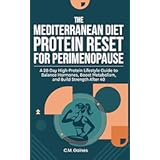Successfully losing weight is not solely about diet and exercise; it hinges on a much broader, integrated approach as highlighted in the video above. True fat loss demands significant commitment and a deep understanding of several interconnected physiological and psychological factors. Many individuals underestimate the profound impact of consistency, sleep quality, and strategic planning in achieving their body composition goals. This holistic perspective offers a more sustainable pathway to effective weight management.
The Foundational Pillars of Effective Fat Loss
1. Beyond Diet and Exercise: The Mindset Imperative
The video astutely points out that diet and exercise constitute only a quarter of the fat loss equation. This critical insight challenges conventional wisdom. Good quality sleep accounts for another significant portion, approximately 25%. However, the overwhelming factor, emphasized as a “500%” contribution, is unwavering adherence and consistency. This hyperbolic statement underscores the psychological resolve required for long-term success. Cultivating a robust mindset and commitment to your stated intentions is paramount for sustained progress. Without this mental fortitude, even perfectly designed diet and exercise regimens will falter.
2. Strategic Goal Setting and Meticulous Planning
Effective fat loss begins with precise, measurable goals. Vague aspirations like “I want to lose weight” are rarely effective. Instead, set quantifiable targets, such as “I will lose 5 lbs (2.3 kg) by July 1st, and another 5 lbs by August 1st.” This provides clear checkpoints for motivation and progress tracking. A detailed, realistic plan must then be constructed to achieve these benchmarks. This plan involves not just dietary adjustments but also lifestyle modifications. For instance, replacing a high-calorie breakfast with a nutrient-dense, lower-calorie alternative is a simple yet impactful change. Prepping meals and workout gear in advance significantly reduces friction and enhances adherence. Studies show that individuals who plan and prepare meals are more likely to achieve their health goals.
Optimizing Calorie Intake for Sustainable Weight Loss
3. Mastering the Calorie Deficit Principle
At its core, fat loss necessitates a consistent calorie deficit. This means consuming fewer calories than your body expends daily. If your total daily energy expenditure (TDEE) is 2,000 calories, then eating 1,700 calories creates a 300-calorie deficit. This forces your body to tap into stored fat reserves for energy. While a larger deficit (e.g., 1,200-1,500 calories) accelerates initial weight loss, it often proves unsustainable due to increased hunger and metabolic adaptation. A moderate deficit of 300-500 calories per day is typically more manageable and promotes long-term adherence. This approach helps preserve lean muscle mass, which is crucial for maintaining a healthy metabolism.
4. Precision vs. Practicality in Calorie Tracking
Determining your ideal calorie intake often starts with online calculators. However, these are merely estimations, as individual metabolism and hormonal profiles vary significantly. The most accurate method involves starting with an estimated number and adjusting based on weekly weight changes. If weight remains static for two consecutive weeks, a further reduction of 200-300 calories is warranted, or increased physical activity. Calorie counting, while effective, demands meticulous attention using nutrition labels, food scales, and tracking apps. For those averse to precise tracking, a safer approach involves rounding calorie estimates upwards. This conservative estimation helps prevent inadvertent overconsumption, especially with foods whose calorie density is often underestimated. This strategy mitigates the risk of exceeding the target deficit.
Strategic Macronutrient Management and Food Selection
5. Prioritizing Protein for Satiety and Metabolic Efficiency
When considering macronutrients—protein, carbohydrates, and fats—protein holds a unique advantage for fat loss. Adequate protein intake promotes satiety, reducing overall hunger and subsequent calorie consumption. Furthermore, protein has a higher thermic effect of food (TEF) than carbohydrates or fats. This means your body expends more energy digesting and metabolizing protein. For every 100 calories of protein consumed, approximately 20-30 calories are burned through digestion. This metabolic boost, combined with protein’s muscle-sparing effects, makes it an indispensable component of any fat loss regimen. Aim for 0.7-1 gram of protein per pound of body weight for optimal results.
6. Decoding Carbohydrates and Healthy Fats
The role of carbohydrates in weight loss is often misunderstood. Refined, highly processed carbohydrates, stripped of fiber and nutrients, contribute to rapid blood sugar spikes and subsequent cravings. These include sugary cereals, pastries, and white bread. Conversely, complex carbohydrates from fruits, vegetables, and whole grains provide essential fiber, vitamins, and sustained energy. These are crucial for overall health and satiety. Fats, while calorie-dense at 9 calories per gram, are vital for hormone production and nutrient absorption. Focus on healthy fats from avocados, olive oil, and nuts in moderation. Avoid excessive intake of added oils, sauces, and certain dairy products which can quickly accumulate calories, even in seemingly small portions. Balancing these macros appropriately supports both energy and satiety.
7. The Power of Minimally Processed Foods
A simple yet profound strategy for fat loss, especially without rigorous calorie counting, is to prioritize minimally processed foods. Shifting away from junk food, sugary desserts, and refined carbs towards fruits, vegetables, lean proteins, healthy fats, and whole grains significantly impacts satiety and nutrient intake. These foods are naturally more filling and nutrient-dense. For instance, 200 calories of strawberries offer far greater volume and fiber than 200 calories of cookies, promoting a feeling of fullness. This dietary change naturally leads to a calorie deficit without the constant sensation of hunger. It streamlines meal planning and reduces the mental burden of calorie calculation. This approach fosters a more intuitive relationship with food, shifting focus from restriction to nourishment.
Advanced Fat Loss Strategies and Lifestyle Integration
8. Leveraging Hydration and Calorie-Smart Choices
Optimal hydration is a powerful, often overlooked, fat loss tool. Drinking ample water helps curb appetite, as thirst signals are frequently mistaken for hunger. Keeping a large water bottle handy encourages consistent intake throughout the day. This habit also reduces cravings for high-calorie beverages such as sodas, juices, and milkshakes. Additionally, strategic low-calorie swaps can make a significant difference. Using low-fat shredded cheese, keto bread, cauliflower rice, or egg whites reduces calorie density in meals. Zero-calorie condiments, spices, and sweeteners enhance flavor without adding calories. However, be mindful that highly palatable “zero-calorie” foods can sometimes intensify cravings for other tasty, high-calorie options. Balance is key to using these tools effectively for losing weight.
9. Intermittent Fasting: A Structured Approach to Eating
Intermittent fasting (IF) is a popular method for achieving a calorie deficit. This involves restricting eating to a specific window, typically 4-8 hours, and fasting for the remainder of the day. While it may sound challenging, hunger often comes in waves and subsides with time. IF helps reduce overall calorie intake by limiting opportunities to eat, often leading to a natural calorie deficit. It can simplify meal planning and reduce decision fatigue around food. However, IF is not for everyone and should be approached cautiously, especially by individuals with certain medical conditions or pregnant/nursing women. Consulting a healthcare professional before starting IF is always advisable.
10. Cultivating Lasting Habits for Effortless Adherence
The ultimate “cheat code” for motivation and sustainable fat loss is habit formation. When healthy behaviors become automatic, the effort required for adherence diminishes dramatically. Reaching a point where morning jogs or choosing nutritious meals are second nature transforms these actions from conscious decisions into ingrained routines. This shift moves beyond mere lifestyle choice; it integrates healthy living into one’s very identity. This level of self-efficacy is a powerful motivator, driving continued progress and adherence. Consistent repetition reinforces these positive pathways, making it 100 times easier to follow a plan. Over time, individuals often begin to genuinely enjoy these healthy activities. This intrinsic motivation is the bedrock of long-term success when losing weight.
Integrating Movement and Optimal Recovery for Fat Loss
11. Diverse Exercise Modalities for Enhanced Calorie Expenditure
Exercise complements dietary efforts by burning calories and improving overall health. Engaging in resistance training (lifting weights) is highly beneficial. It not only burns calories during the workout but also boosts your resting metabolism by building and maintaining muscle mass. More muscle means more calories burned at rest. Cardio, while sometimes viewed as boring, significantly increases calorie expenditure. High-intensity interval training (HIIT) offers an efficient way to burn calories in shorter durations. Circuit-style workouts combine elements of both, providing a comprehensive fitness approach. Understanding the caloric cost of exercise can also deter overeating; experiencing the effort required to burn 200 calories often makes individuals less likely to mindlessly consume a 200-calorie snack. This reinforces the value of movement.
12. The Unseen Impact of Non-Exercise Activity Thermogenesis (NEAT)
Non-Exercise Activity Thermogenesis (NEAT) refers to the energy expended for everything we do that is not sleeping, eating, or sports-like exercise. This includes walking, fidgeting, cleaning, standing, and even cooking. While often underestimated, NEAT can account for a significant portion of daily calorie burn, sometimes hundreds of calories. Simply being less sedentary throughout the day—taking stairs instead of elevators, parking further away, or standing more—contributes substantially to overall energy expenditure. These small, consistent movements compound over time, acting as a “cheat code” for burning extra calories and facilitating fat loss. Actively seeking opportunities to move more outside of structured workouts can significantly impact your body composition goals. This continuous low-level activity supports a calorie deficit.
13. Sleep: The Critical, Often Overlooked, Hormonal Regulator
High-quality sleep is a non-negotiable component of effective fat loss, often dismissed by individuals who believe they “get enough.” Sleep critically regulates hormones that dictate appetite, metabolism, and body fat storage. Insufficient sleep elevates ghrelin, the hunger hormone, while suppressing leptin, the satiety hormone. This imbalance leads to increased cravings and a greater likelihood of overeating. Moreover, poor sleep increases cortisol, a stress hormone linked to abdominal fat storage and insulin resistance. Aim for 7-9 hours of uninterrupted sleep per night. Prioritizing sleep creates an optimal hormonal environment that supports your body’s natural ability to burn fat and manage hunger, making your fat loss journey far more effective and less of a struggle. Ignoring sleep undermines all other efforts. Optimizing sleep is a powerful strategy for losing weight.











